Walking stories and case studies
Walking stories
We asked Queenslanders to share their walk stories about how walking has improved their health or positively impacted their community. This is a collection of stories gathered during the Queensland Walking Strategy engagement. We will publish new walking stories over time.
- Brian's story: Lions Club of Buderim 'Walking to School' program
- Marie's story: enjoying the flexibility and ease of walking
- Mia's story: work-time walks
Brian's story: Lions Club of Buderim 'Walking to School' program
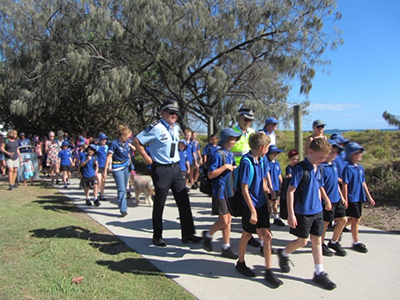
The Buderim Lions Club coordinates a Walk to School program at 4 schools on the Sunshine Coast.
The program encourages parents to bring their children to designated drop off points, away from congested areas near the schools. Parents are also encouraged to join the walk with their children.
The assembled children are escorted to school by Lions members, police officers, and volunteers. This supervision makes sure the children remain safe for the trip.
'The walk to school encourages children to socialise and make friends of different ages. The parents also have the opportunity to meet other parents and often go for a coffee once the children are at school,' said Brian, Buderim Lions President.
'The walks generally last about 20 minutes, which is long enough to give them good exercise. The kids are definitely more active now, more aware of road safety and they look forward to walking to school with their friends.'
Marie's story: enjoying the flexibility and ease of walking
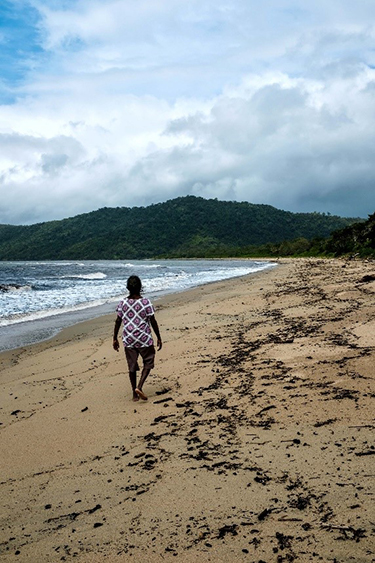
Marie, the Cultural Advisor at Wujal Wujal Aboriginal Shire Council, is an Indigenous Australian who lives in Wujal Wujal, 40km north of Port Douglas in Far North Queensland.
Marie has always enjoyed the flexibility and ease of walking.
'You can go your own pace, go sightseeing and talk with family and friends,' Marie said.
Walking is Marie’s first choice—she walks to work every day and for recreation.
'I always go walking down at Weary Bay, walking along the beach looking for Pipi shells,' Marie explained.
Marie has grown up walking regularly and has many fond memories of walking with ancestors and friends. She also appreciates the resulting health benefits of walking.
After being diagnosed with diabetes, Marie continues to walk regularly. 'It's a good way to keep your sugar levels down, and stay healthy and strong,' Marie said.
Marie loves walking in her local area as it brings her closer to those around her while allowing her to keep fit and healthy.
Mia's story: Work-time walks
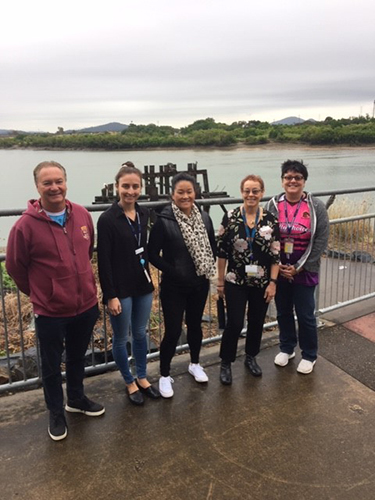
The Mackay Hospital and Health Service holds "Let's Go with Jo" walks on Friday mornings during the cooler winter months.
The 20 minute walk began as an opportunity for staff to pitch ideas to Jo, the Chief Executive Officer of the Mackay Hospital and Health Service. On average, 10 to 12 people participate in the walk every week, which allows staff to communicate and socialise while enjoying the outdoors.
Mackay Hospital’s Wellness Advisor, Mia, explained that staff are invited to join the walk during their work time.
'They are grateful to have the opportunity to walk with Jo and chat about anything work related,' she said. 'Staff are grateful for this "pause" and opportunity to get some fresh air.'
'We walk along the Pioneer River on the Blue Water Quay walking track, which is near the Health Service boundary. It is a pleasant walk, and it is easy to return to the facility,' said Mia.
'We have offered early evening walks as some of our staff find it hard to make a morning slot and are grateful to be able to walk on the beautiful Bluewater trail,' said Jo.
Case studies
We asked local governments, state government, and advocacy groups to share walking case studies during the engagement consultation for the Queensland Walking Strategy. Find out how these groups used infrastructure, technology, and cultural change programs to help make walking an easy choice for everyone every day.
Case study: Warrego River Walk
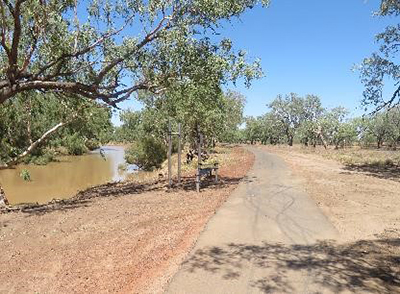
In Charleville, the Warrego River Walk is a popular pathway for locals and tourists. The Warrego River Walk provides a safe river crossing and access to the town centre. The 2.6m wide pathway is used by individuals, family groups and is a place where parents walk their dogs while children run or ride bikes.
Funded by Murweh Shire Council, the River Walk was constructed to replace an old sub-standard concrete footpath.
In 2013, the River Walk was declared the state winner in the Heart Foundation Local Government Awards for a population of 15,000 or less. The awards recognise and showcase councils which develop infrastructure that supports recreation, social interaction and active transport options.
In 2018, dozens of young families used the walkway to raise funds for premature and sick babies during a Walk for Prems event run by Life’s Little Treasures Foundation.
The council plans to extend the River Walk with an 80m concrete pathway which will complete the loop, with a pathway connecting to the Charleville CBD.
Read more about the Heart Foundation Local Government Awards.
Case study: Bourbong Street, Bundaberg
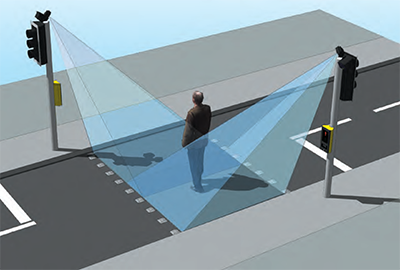
In 2014, one of Queensland's first smart crossing trials was installed at the Maryborough Street and Bourbong Street (Bundaberg-Bargara Road) intersection, in Bundaberg.
The smart crossing was installed in response to several near misses between pedestrians and motorists at the intersection.
Before the trial, the red left-turn arrow turned off at the end of the pedestrian's green 'walk' signal, allowing motorists to proceed if safe to do so. This meant that pedestrians were often still in the path of turning vehicles when the red arrow disappeared, creating a dangerous situation for pedestrians and motorists.
A standard solution, extending the time that the red left-turn arrow was displayed to the full length of the pedestrian crossing period, would have caused significant traffic delays, impacting the greater traffic network.
The city installed a smart crossing, which turns off the red left-turn arrow when the pedestrian crossing has cleared resulting in improved safety and a reduced impact on the traffic network.
Monitoring and public feedback have determined that the smart crossing solution improves safety for pedestrians and efficiency for motorists. It found drivers no longer wait unnecessarily when pedestrians cross the road and pedestrians now cross without the threat of traffic turning towards them.
Case study: 10,000 Steps

The 10,000 Steps program has been run by Central Queensland University since 2001 and encourages Queenslanders to walk 10,000 steps every day. The program's interactive website and mobile app include online resources and how-to guides to assist organisations in promoting walking and physical activity in their workplace and community.
More than 400,000 members have logged over 200 billion steps and more than 13,500 organisations have been engaged to deliver 10,000 Steps strategies. In 2017 and 2018, 21 community grants funded by the Queensland Government reached 23 local government areas. These grants have funded 9 community tournaments and more than 12 walkway projects.
In 2018, a 16-week healthy lifestyle challenge occurred between neighbouring Mackay Hospital and Health Service and Central Queensland Hospital and Health Service, at the invitation of the Let’s Shape Up! Inspire your Tribe! initiative, within the Mackay Institute of Research and Innovation.
Challenge participants logged their daily steps, weekly weight and waist girth measurements on the 10,000 Steps website. Mackay Hospital and Health Service recorded the highest loss—800 participants lost more than 400kg, 360cm in waist girth and logged over 270 million steps. This shows how promoting existing programs through partnerships can be a success.
- Last updated 20 November 2020

